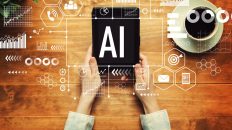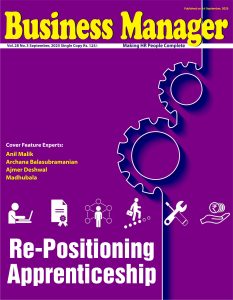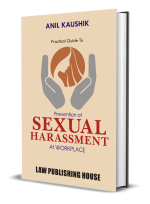The workplace is changing very fast. There was a time when the future of work was about human intelligence versus machine. Today, it is about how to engineer their collaboration. Fast changes in the world today open the way for HR to innovate in impactful Human-AI collaboration. But what really makes Human-AI collaboration effective is not the technology or algorithms; it’s the human-centric approach to incorporating AI into the working environment. This is the realm of Design Thinking: a strong, empathetic, creative approach through which organizations can envision and develop new possibilities for interaction between people and machines. By following this path, HR envisions a future where technology supports human ability, thus bettering life and work for all.
As AI is integrated further into everyday workflows, from recruitment analytics to personalized learning-efficiency is often the paramount concern of organizations. It becomes ever more imperative to keep human-centered thinking. Design Thinking, then, would serve as a bridge in that transformation so that technology is aligned to working with people as co-creators of experiences, needs, and aspirations. By synthesizing AI-driven analysis and human emotional intellect, Design Thinking fosters collaboration, creativity, and continuous improvements.
Also read – Jade Global appoints Pooja Bansal as EVP & Global Head HR
In the modern digital workplace, employees use AI more often than they may realize in today’s digital workplace, whether it be through chatbots, learning platforms, performance dashboards, or other tools. HR teams can use Design Thinking to make sure these interactions are both useful and meaningful. Organizations can create AI-powered tools that are intuitive, user-friendly, emotionally intelligent, and sympathetic by actively involving employees in the co-creation of these systems. These resources can also be customized to fit specific learning and professional objectives. For example, in onboarding, an AI-powered tool integrated in a way that meets employees’ development needs would provide a much smoother, fun, and fulfilling experience.
From custom learning paths to real-time support, the creation of an AI onboarding platform should include all Design Thinking touchpoints, including welcome messages, peer-mentors’suggestions, and prompting for immediate feedback. Hence, whenever a journey develops out of Design Thinking, it seems both intelligent and humane.
Design Thinking can also be the primary precursor for reskilling and upskilling employees for the future. As technology advances, so does the talent needed to work with it.
By using Design Thinking, HR can gain insights into what their employees require in a learning experience and develop adaptable, engaging learning ecosystems that blend together AI-powered insights with human mentorship and feedback. It creates change embracers willing to design learning not as a one-size-fits-all mandate but as a personal path of growth, guided by both data and empathy.
Design Thinking is more than a trend; it’s a positive force that is redefining how we innovate, collaborate, and develop in the era of AI. As organizations embrace human-AI collaboration, HR leaders have the chance to shape a future that is not just more productive, but also more human. By applying empathy, creativity, and experimentation, Design Thinking ensures that the AI-powered workplace of tomorrow is one where people feel appreciated, inspired, and ready to thrive.
But what really makes Human-AI collaboration effective is not the technology or algorithms; it’s the human-centric approach to incorporating AI into the working environment. This is the realm of Design Thinking: a strong, empathetic, creative approach through which organizations can envision and develop new possibilities for interaction between people and machines.
With Design Thinking as the guiding approach, HR helps in the creation of inclusive, engaging workplaces, which are adaptive towards the new working model where AI works with human capability and not competing with it. When Design Thinking is in place, there is a topmost priority for human needs; every consideration weighs the human side, and technology is developed to empower people. This paradigm brings about the world of empathetic and intelligent; where data meets intuition and algorithms meet creativity.
Design Thinking never was a fad; it is the responsible trillion dollar force, programming in some respects, how we innovate and collaborate as well as grow in this age of AI. As organizations move towards human-AI collaboration, HR leaders could define a future that is more productive but also more human. Design Thinking assures that the AI-driven workplace of the future inspires, appreciates, and prepares for the great performance of people-carried out with empathy, creativity, and experimentation.
Stay connected with us on social media platforms for instant updates click here to join our LinkedIn, Twitter & Facebook









